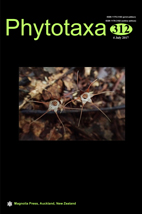Abstract
Pseudolepiota zangmui, collected from mixed subtropical Fagaceae forests of Southwestern China, is described, illustrated and discussed as new based on unique morphological characters and molecular data. Pseudolepiota is distinctive in having white lamellae, a stipe covered with easily detached band-like floccose squamules, a pileipellis that is a subcutis layer made up of slightly interwoven cylindrical hyphae, dextrinoid basidiospores without a germ pore and hyphae without clamp connections. The combined morphotaxonomy and Maximum Likelihood tree inferred from rpb2 and ITS sequences confirmed that Pseudolepiota is a member of Agaricaceae and is evolutionarily distinct from all other described genera and species within this family.

